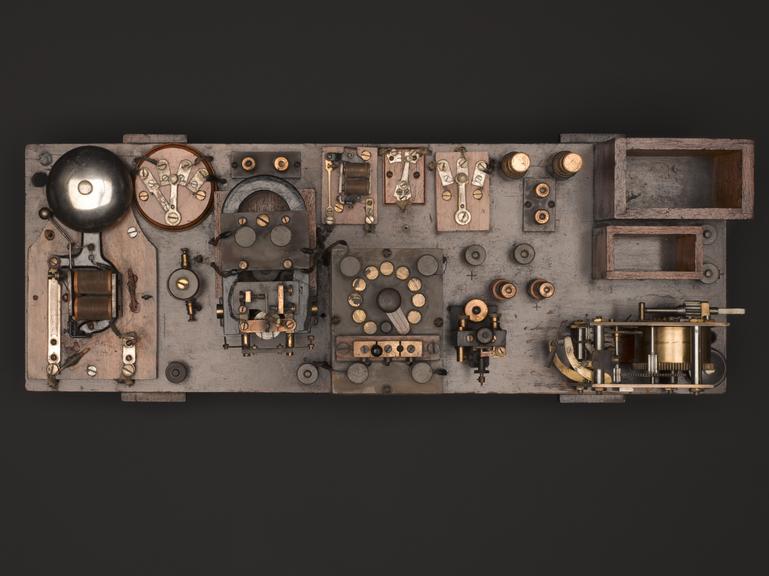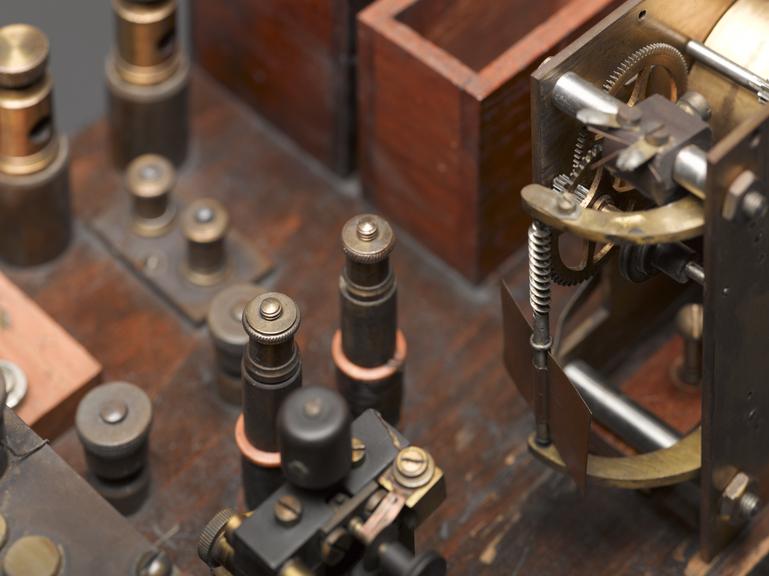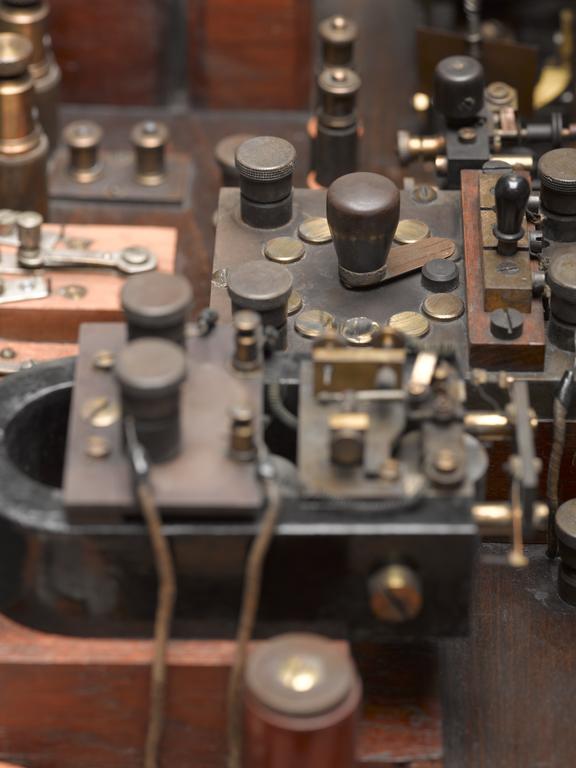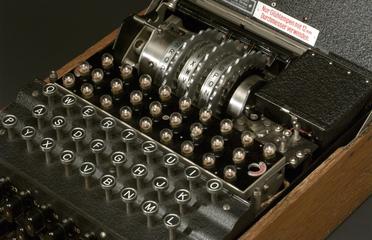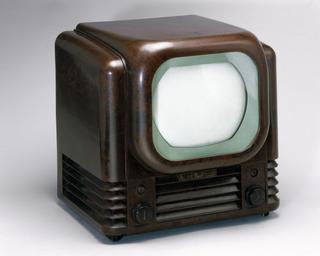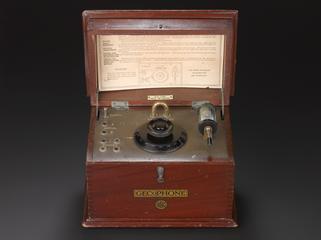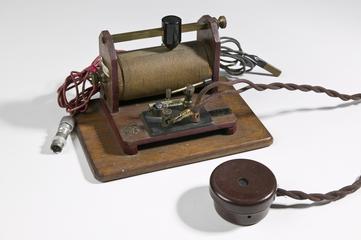Experimental Lodge-Muirhead wireless telegraph receiver, 1900-1910
Experimental Lodge-Muirhead wireless telegraph receiver, designed and built by Robert Pickersgill Howgrave-Graham, British, about 1905.
More
This is an experimental receiver for wireless telegraphy designed and built by R P Howgrave-Graham in about 1905. It makes use of the steel-disc coherer, or thin-film detector, developed by Oliver Lodge and his principal assistant Edward Robinson. Howgrave-Graham described the construction of this receiver in his book' 'Wireless Telegraphy for Amateurs', published by Percival Marshall & Co, London (no date given but the British Library copy was received by them in May 1907). The receiver illustrated in the book is exactly similar to the receiver given to the Science Museum by Howgrave-Graham in 1923. From references in the book, a construction date of about 1905 has been conjectured.
- Measurements:
-
overall: 150 mm x 210 mm x 560 mm, 4.12 kg
- Materials:
- mahogany (wood) , copper (alloy) , steel (metal) , sealing wax , plastic (unidentified) , wood (unidentified) and brass (copper, zinc alloy)
- Object Number:
- 1923-443/1
- type:
- telegraph instrument





